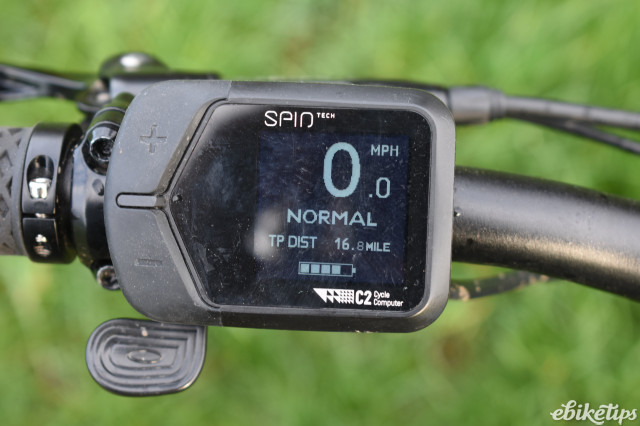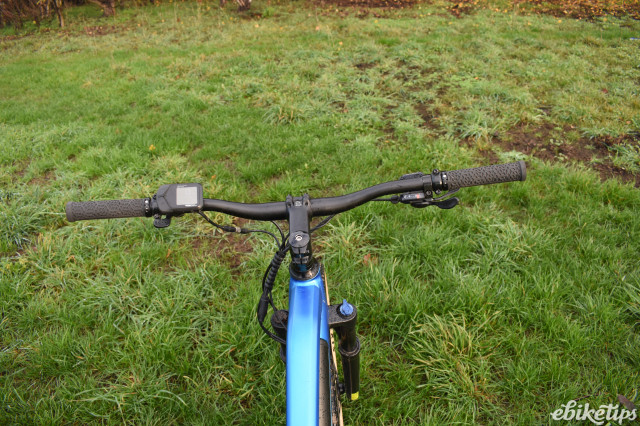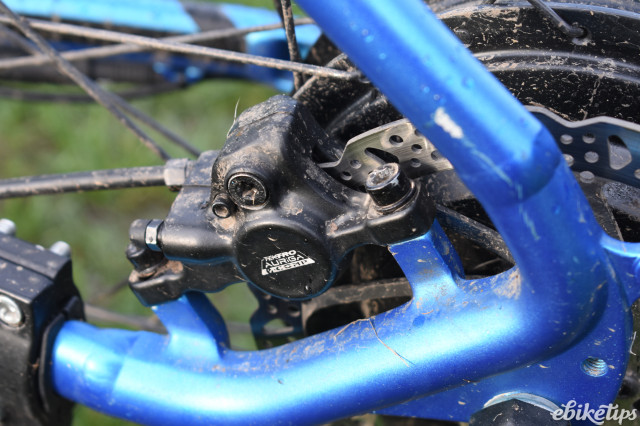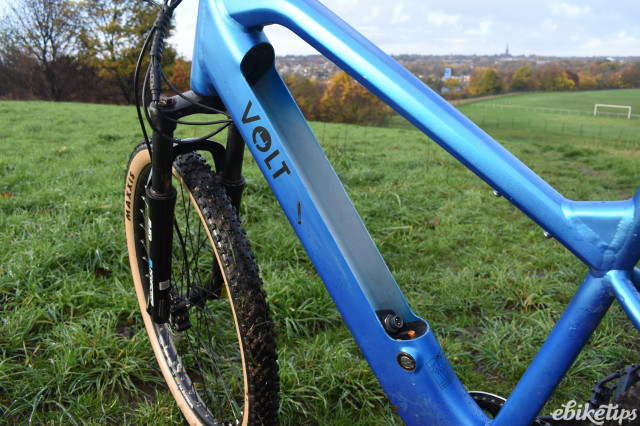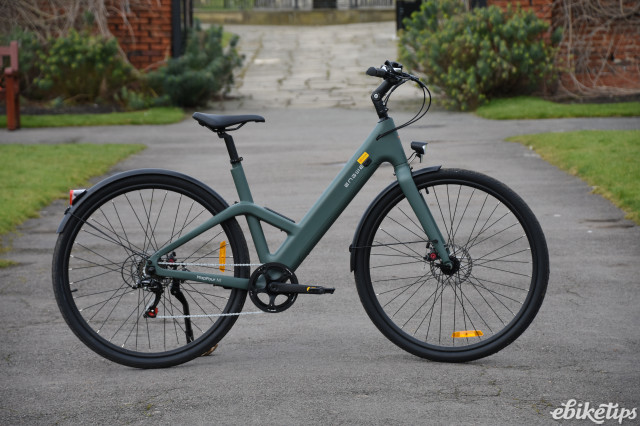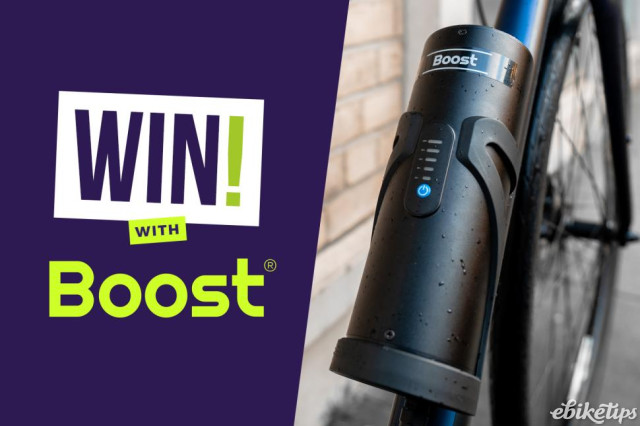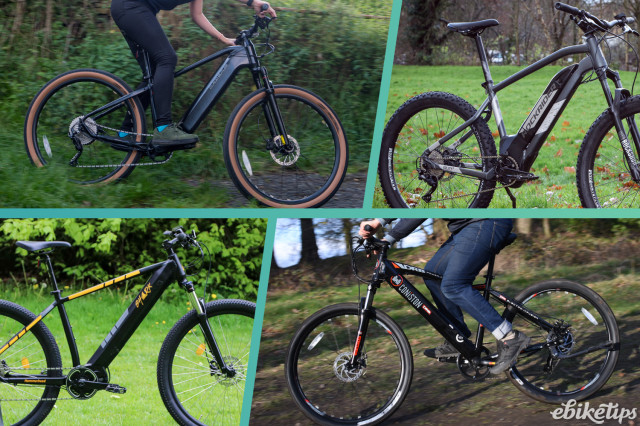Review: Volt Alpine
Overview
- Powerful motor
- Good range
- Good trail performance
- Wider gear range would be good
It's not surprising that e-MTBs are one of the most popular categories of e-bikes, with many dealers reporting that they sell pretty much all they can get their hands on. The benefits of a good motor system make mountain biking a practical option for many who otherwise would just find it too much like hard work. In short a good e-MTB lets you go places and do things you wouldn't otherwise be able to do. And add a rack, lights and mudguards and you have a serviceable commuter or tourer too.
Whereas other brands like Haibike and Cube have numerous off-road capable machines with mid-drives, UK-based Volt have recently launched the Alpine, a hub-motored, hardtail e-MTB designed to undercut these large, high quality German manufacturers price-wise whilst still coming up with the goods performance-wise. Our tests show they succeeded pretty well.
Spec
Let's start with the motor system as this at the heart of why the Alpine has such good performance. It appears to be the same Spintech branded Bafang rear hub motor that features on the single speed Volt London we reviewed earlier in the year. Crucially, in performance terms, it is paired with a torque sensor that means power output depends on how much pressure you put on the pedals. (We cover this in more detail in the performance section below.) The Bafang branded torque sensor is integrated into the bottom bracket / pedal axle assembly so it's not something you would immediately know the bike features just looking at it, but it's one of the crucial hallmarks of a step-up in quality and performance from budget e-bikes to mid-priced ones.
Most unusually, there is a trigger throttle control too (just underneath the clear LCD display), which applies full power. (It works in the first three of the four power levels as the highest level is full power anyhow.) In line with EU and UK e-bike law, the pedals have to be turning for the throttle to work (though also in line with the law, it works on its own up to about 4mph as a 'walk assist' function). It's a bit of mystery as to why throttles are relatively rare on e-bikes as they can be super useful in certain situations and seem particularly suited to e-MTBs where you might want a quick burst of power to negotiate a short, steep section of trail climb.
The motor is paired with a frame-integrated 504Wh battery which locates in the frame with a solidly reassuring click. There is a button on the battery itself which turns the system on and off and indicates approximate remaining capacity with an appropriately coloured light. For an extra £100 you can upgrade battery size to 630Wh, but as you you will see in the performance section, the range from the 504Wh version we tested was pretty impressive.
There is a one size 19" frame frame in a striking blue colour with a fairly high bar position for an e-MTB but otherwise conventional MTB geometry. It's a nice compromise between a comfortable and sporty riding position and suited the 5'8" test rider well. At 23.4kg on our scales it is no lightweight, but it's about the weight you expect for this spec, with a good amount of power and battery capacity at this price level.
The package is completed by a Shimano Alivio 8-speed derailleur, Tektro E-comp hydraulic disc brakes, 120mm travel Suntour X1 sprung front suspension, zoom suspension seatpost and Maxxis Ikon tyres.
There are no 'extras' other than a kickstand, even though there are an increasing number of e-MTB models that do feature full 'commuter/touring' packages (i.e. hardwired lights, pannier rack and mudguards). The Alpine has mounting points for a rear rack and mudguards and you could fit a suspension fork specific front mudguard too. There's also a handy bottle cage mount on the frame.
Performance
This is a bike the test rider just loved riding. As with the Volt London, almost as soon as you step on the pedals, the motor springs into life and the harder you step on the pedals, the more power it delivers; it's one of the best motor sytems we have tried in terms of the power output responding to your pedal input.
There feels to be plenty of power on tap for steep climbs, confirmed by our standard hill climb tests. Perhaps a little surprisingly, the Alpine was just average on the long tarmac test but aced steeper and shorter off-road climbs where its low-speed torque really shone through.
The test rider's only quibble climbing-wise is that he would have liked more gears - or rather a lower bottom gear for truly challenging off-road climbs. There was plenty of motor torque there to handle such climbs but really steep gradients weere a bit more of a physical challenge than they might have been with a lower gear. The shifting also felt stiffer than it should (possible the cable routing needs some attention), so the rear derailleur area is the only design weakness the test rider identified.
The range test confirmed the efficient feeling ride of the motor system. It was ridden most often in the lower two power levels with levels three and four used on steeper off road climbs. The range test was actually cut short due to torrential rain on a figure of 36 miles with two battery bars remaining for the 504Wh battery - suggesting a range of 40 miles off-road was well within the capability of the 70kg test rider (possibly considerably more). If that doesn't sound like enough for you, remember there is a bigger battery option too. Test conditions were quite demanding as well - huge amounts of rain having made track conditions super-gloopy.
Overall the Alpine handled smoothly and safely on a real mixture of Pennine bridleways, from very muddy tracks to looser, rockier surfaces. The test rider was particularly impressed with the combination of the Maxxis Ikon tyres (plenty of grip on mud and slippy grass whilst remaining free running on tarmac) with the Suntour forks. The latter have a lockout for road riding and the adjustable compression meant the test rider could set them nice and soft as desired, whilst the damping was very effective too. They are definitely a step up from many budget sprung forks which tend to be either way too hard or loose and bouncy. Add in the very effective hydraulic braking and you get a bike that feels safe and stable off road, even on slippy, steep descents, whilst maintaining grip and handling on steeper ascents.
Comfort wise the saddle felt rather unforgiving and the suspension seatpost needed to be softer, but these are relatively easy fixes.
Value for money
The outstanding value for money e-MTB remains Decathlon's Rockrider E-ST 520 which features a high quality Brose mid-drive (though note it has a smaller 420Wh battery compared to the Alpine).
The Rockrider aside, the Alpine undercuts all 'entry level' mid-drive e-MTBs whilst, as we have noted, it rivals many in performance terms. The nearest other mid-drive competitors are the Voodoo Bizango, Haibike's Hardseven 4 and Cube's Reaction Hybrid Performance, which we rated as the best hybrid-style option in our guide to the best electric mountain bikes. (That article just shows you how most e-MTBs with truly capable off-road performance like the Alpine cost way more money.
In short, if you want loads of off-road e-bike fun powered by some powerful yet smooth electric assist the Volt Alpine is a great place to start.



